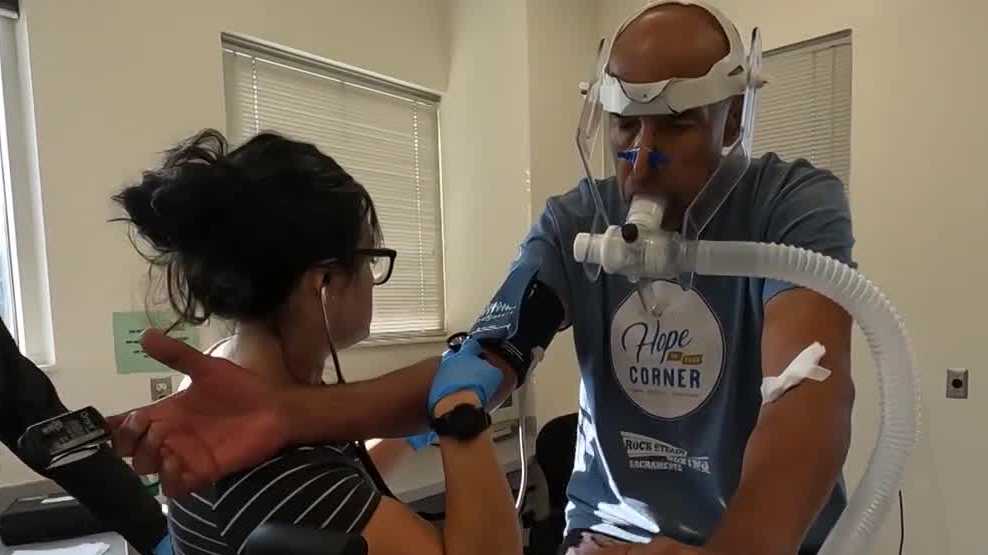Can exercise help slow the progression of Parkinson’s disease in patients?That’s the question a team of faculty and student researchers at Sacramento State are trying to answer with a new study.Dr. Gwénaëlle Begue and Dr. Matt J.N. Brown, both professors at the university, are leading the research. More than 20 people from the Sacramento region are participating in the study, which began this summer.It involves exercising both at home and in person with the research team inside the Human Performance Research Laboratory. Participant Tony Cepeda from Citrus Heights said he gets an email every week where he tracks and reports his activity levels and exercise. The email also has a video that shows participants different exercises they can do.For the in-person testing, participants ride a stationary bike while being connected to equipment that monitors things like their oxygen consumption, carbon dioxide production, and heart rate. Their blood is also taken a few times after the workout to see how exercise impacts Parkinson’s patients at the molecular level. Other tests are also done.Brown said the eventual goal is to see if doctors can prescribe exercise to patients as a way to slow or stop their symptoms from the disease.”If we can find a level of exercise and or other non-invasive therapeutics that can lead to disease-modifying that can slow or even stop the progression, that would be an incredible thing,” he said.For 68-year-old Cepeda, he said he doesn’t feel his symptoms as much, especially the tremors, when he works out. He said he exercises on a regular basis by boxing, walking and physical therapy.”I have Parkinson’s. Parkinson’s doesn’t have me,” Cepeda said.He found out about the study through the Parkinson’s Association of Northern California, of which he is a member. His hope? Helping this team get closer to finding a cure.”As long as they find something that can help somebody in the future in their research,” he said. “I’m just trying to do my small part.”
Can exercise help slow the progression of Parkinson’s disease in patients?
That’s the question a team of faculty and student researchers at Sacramento State are trying to answer with a new study.
Dr. Gwénaëlle Begue and Dr. Matt J.N. Brown, both professors at the university, are leading the research. More than 20 people from the Sacramento region are participating in the study, which began this summer.
It involves exercising both at home and in person with the research team inside the Human Performance Research Laboratory.
Participant Tony Cepeda from Citrus Heights said he gets an email every week where he tracks and reports his activity levels and exercise. The email also has a video that shows participants different exercises they can do.
For the in-person testing, participants ride a stationary bike while being connected to equipment that monitors things like their oxygen consumption, carbon dioxide production, and heart rate. Their blood is also taken a few times after the workout to see how exercise impacts Parkinson’s patients at the molecular level. Other tests are also done.
Brown said the eventual goal is to see if doctors can prescribe exercise to patients as a way to slow or stop their symptoms from the disease.
“If we can find a level of exercise and or other non-invasive therapeutics that can lead to disease-modifying that can slow or even stop the progression, that would be an incredible thing,” he said.
For 68-year-old Cepeda, he said he doesn’t feel his symptoms as much, especially the tremors, when he works out. He said he exercises on a regular basis by boxing, walking and physical therapy.
“I have Parkinson’s. Parkinson’s doesn’t have me,” Cepeda said.
He found out about the study through the Parkinson’s Association of Northern California, of which he is a member.
His hope? Helping this team get closer to finding a cure.
“As long as they find something that can help somebody in the future in their research,” he said. “I’m just trying to do my small part.”
Source link
credite

